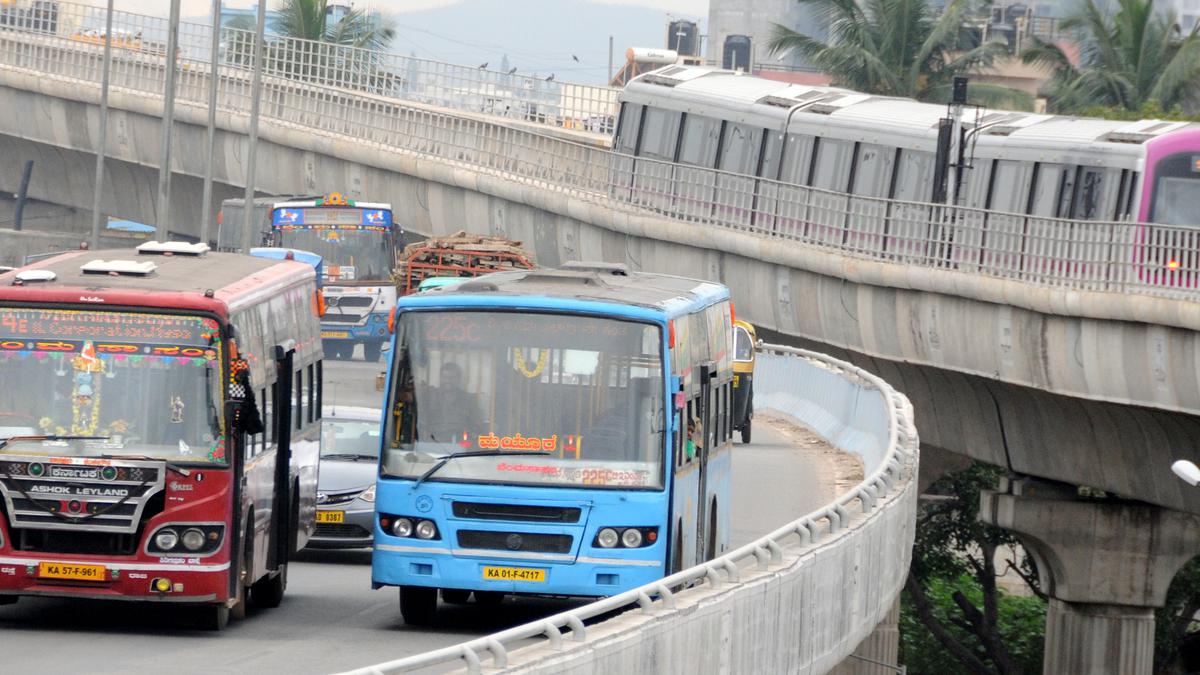
76,000 commuters in Bengaluru rely on BMTC metro feeder buses every day
The Hindu
The recently introduced feeder bus services aim to enhance connectivity between major tech corridors, including the Outer Ring Road (ORR), and metro stations, addressing last-mile connectivity issues.
Following inauguration of the complete Purple Line from Whitefield to Challagatta, the Bengaluru Metropolitan Transport Corporation (BMTC) has extended its metro feeder bus services. Now, more than 76,000 commuters in Bengaluru rely on these buses as the metro network continues to expand.
Addressing a query during the winter session of the Assembly in Belagavi regarding the functioning of metro feeder buses in Bengaluru, Karnataka Transport Minister Ramalinga Reddy revealed that 76,468 passengers utilise the 134 feeder bus services every day.
According to Mr. Reddy, the data indicates 2,012 daily trips of feeder buses connecting different metro stations and areas in the city. Among these routes, the MF-5 route stands out with the highest ridership, registering 13,949 passengers traveling daily between Central Silk Board and Swami Vivekananda Metro station.
The recently introduced feeder bus services aim to enhance connectivity between major tech corridors, including the Outer Ring Road (ORR), and metro stations, addressing last-mile connectivity issues. According to a senior BMTC official, the routes were launched to connect Hoodi Metro Station to K.R. Puram, J.P. Nagar station to J.P. Nagar 7th Phase, Jayanagar 9th Block round trip, Banashankari to BTM Layout (Kuvempunagar), Chikkabanavara to Nagasandra, and K.R. Pura Metro Station to Central Silk Board, serving commuters in the tech corridor of the Outer Ring Road and Kadugodi.
Mr. Reddy told The Hindu, “The BMTC is expanding its fleet of feeder bus services in Bengaluru, with specific emphasis on linking metro stations. Presently, there are 38 buses, comprising both AC and non-AC, operating on four recently established feeder routes. The primary goal of these routes is to enhance metro accessibility, particularly for employees working in companies along the Outer Ring Road (ORR) and in the eastern and south-eastern regions of the city.”











